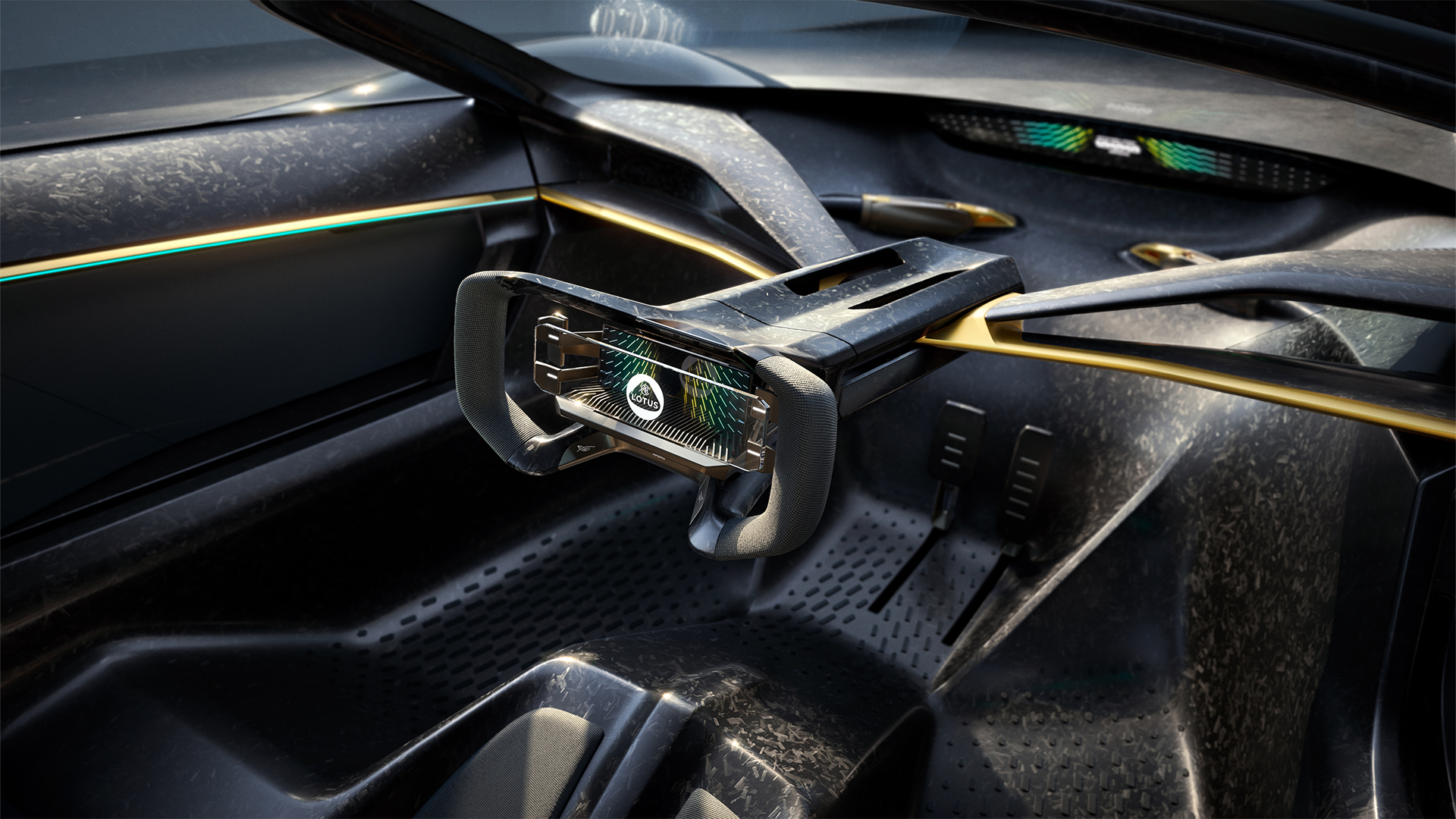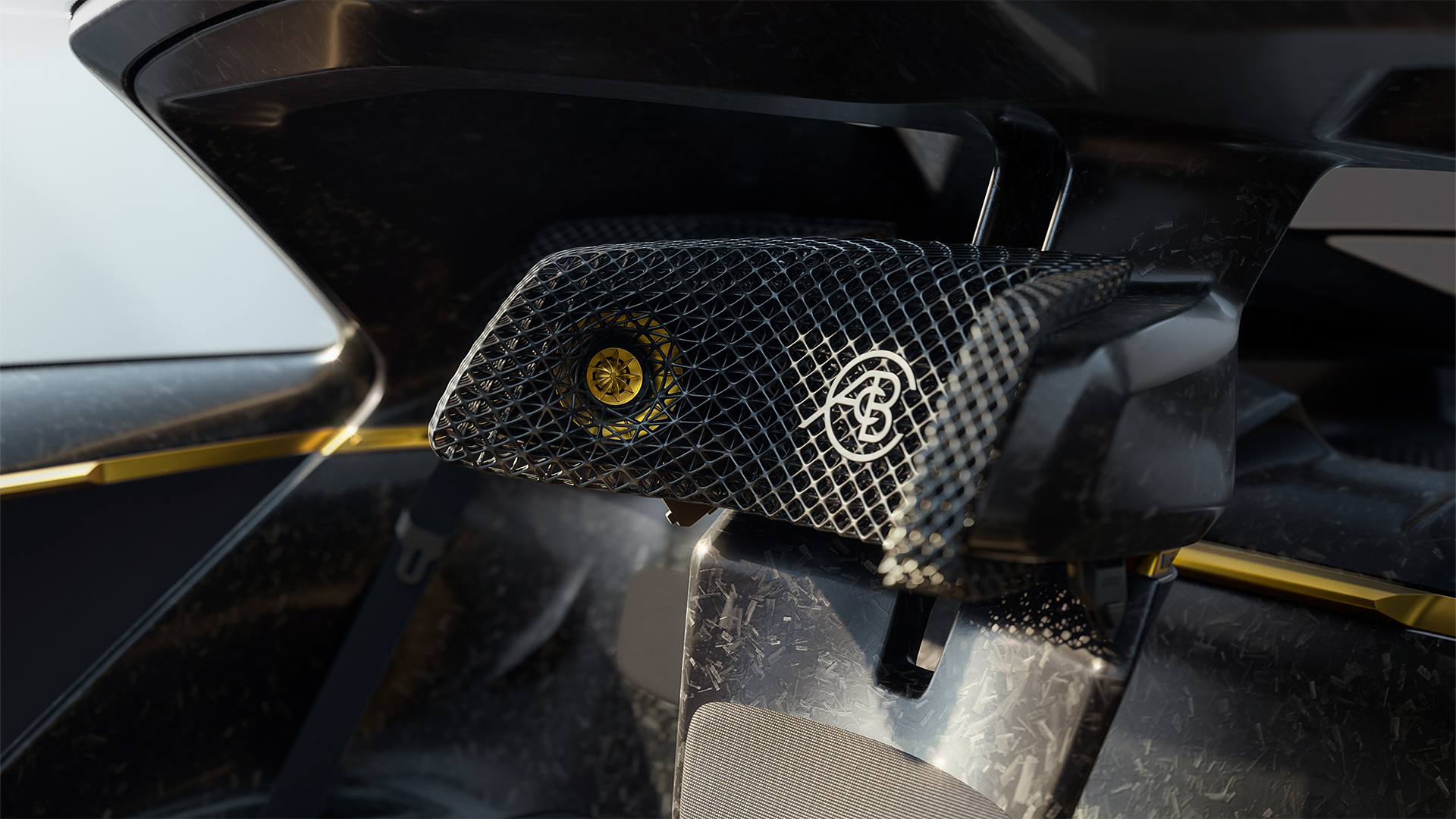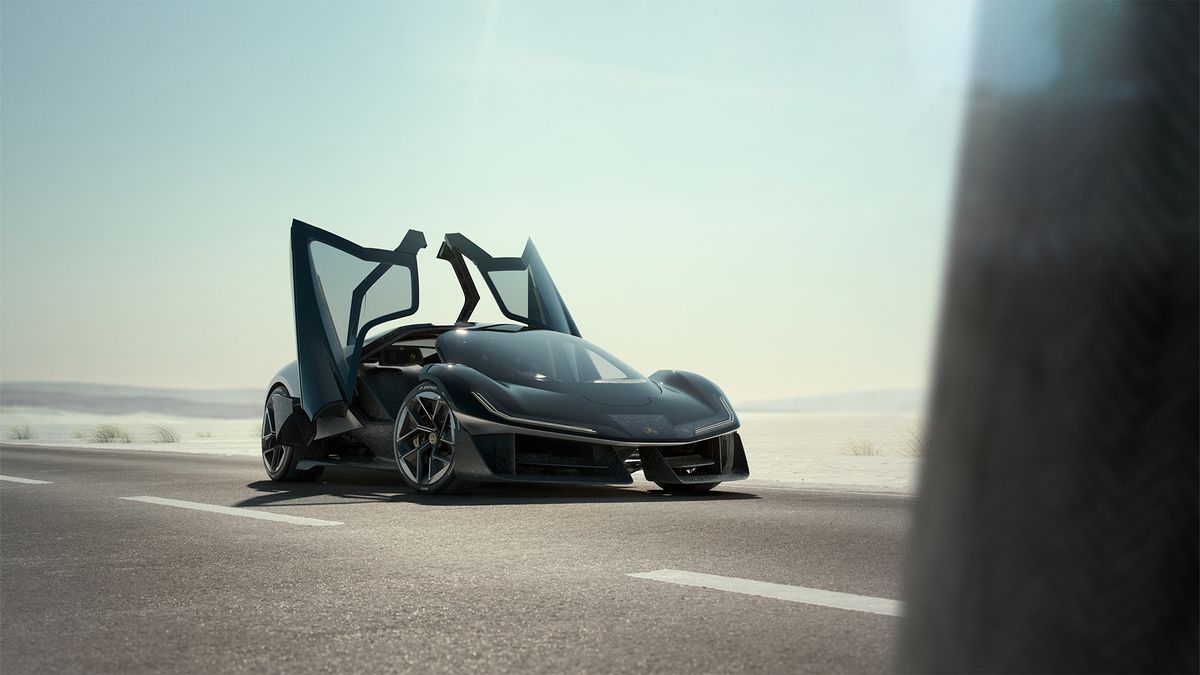Lotus has unveiled its latest concept car, which gives a hint of what we can expect from the company's high-performance future, including a minimalist interior that relies on robotic textiles rather than physical buttons.
As with many concept cars, there's a lot of hypothetical thinking here, and much of the tech and performance figures offer a suggestion of what might come, rather than a true statement of intent.
In theory, a rather modest 70kW battery would send power to all four wheels, generating 968bhp and a 0-62mph time of under 2.5 seconds. This all sounds like “modern hyper EV” to us, but what’s more interesting is the tech inside the vehicle.
Both designers and engineers have simplified everything, which (to the derision of pure Lotus fans) is not something the company has chosen to do with its current production cars, such as the large Eletre SUV and the four-door Emeya GT.
Open the Theory 1's reverse-opening wraparound doors and you'll find swathes of recycled carbon fibre, with the driver's seat positioned in the centre and two small passenger seats to the sides, very much in keeping with Gordon Murray's sports car design.
These seats, as well as the yoke-style steering wheel, are trimmed in what the company calls LotusWear, which consists of a soft, conformable fabric that covers key sections and touch points.
Working alongside MotorSkins, who developed the technology to create dynamic clothing that can provide on-the-fly compression, thermoregulation and haptic feedback for athletes, Lotus saw fit to use it as an innovative human-machine interface.
While driving, both the driver and passengers will receive notifications via the inflatable robotic textiles during the journey. This could be via a pulsating light on the left shoulder to indicate an upcoming left turn, or a tap on the lower back to indicate an incoming smartphone message.

Similarly, inflatable pods on the steering wheel could indicate a blind spot hazard or provide extra grip when picking up the pace. The use cases are broad, but the overall mission remains the same: simplify the cockpit by eliminating physical buttons.
In addition to transparent screens, head-up displays and multi-use toggle switches, Lotus has also partnered with technology company Carbon to produce 3D-printed lattice-structure headrests that can serve multiple purposes.
The soft, supportive structures are there to provide comfort and security, but they also house KEF's binaural audio system.
The ability to send sound directly to each seat occupant means Lotus can heighten the sense of speed with a bespoke soundtrack, act as a noise-cancelling system on more everyday journeys, or simply allow each passenger to experience individual media without sound interference.
Analysis: Lotus is built on its core values

Much of the criticism Lotus has received since being taken over by its Chinese owners Geely is that it has strayed so far from Colin and Hazel Chapman's dream of creating a lightweight, affordable and purely fun sports car.
The model range is now big, heavy and packed with superfluous technology that fans of the original cars seem to loathe. But sales of the Elise and Evora fell to the point that the company almost went bankrupt, proving that there is no longer enough demand for a “proper” Lotus.
Instead, the company has had to do what Porsche, Bentley, Ferrari and Lamborghini have done in the past, which is to create a product that doesn’t traditionally fit into the range but sells very well (Lotus broke sales records in 2023) to ensure we keep enjoying the fun. Cheers to the Cayenne, Bentayga, Purosangue and Urus.
However, Theory 1 seems to be hinting that Lotus is looking to return to its roots, without giving up on future technology.
Stripping it all down is the very ethos the company was built on, but it does so in a way that still incorporates Lidar, camera systems, in-car entertainment, and even high levels of autonomous driving capabilities.
It's true that the Theory 1 won't be a simple lightweight two-seater, but, like the Hyundai Ioniq 5 N, it looks to be tackling what it means to be a performance car in the electric age.









